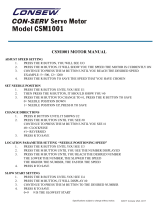
6 | powerquilter™ 1600 Quilng Machine User’s Guide
AVERTISSEMENT — pour réduire le risque de brûlures, d'incendie, de choc électrique ou
de blessures
• La powerquilter™ 1600 est lourde. Ne tentez jamais de la soulever seule. Utilisez toujours deux
personnes pour la soulever. Soulevez toujours la machine à partir de la gorge, non pas à partir des
poignées.
• Débranchez toujours la powerquilter™ 1600 de la prise électrique lors des travaux d'entretien, du
changement d'aiguille, de la suppression des blocages de fil, ou lorsqu'elle est laissée sans surveillance.
• Ne pas débrancher en tirant sur le cordon. Pour débrancher, saisir la fiche, non le cordon.
• N'approchez pas les doigts des parties mobiles. Faites preuve de prudence lorsque vous vous
approchez de l'aiguille ou de composants externes tranchants.
• Changez souvent d'aiguille. N'utilisez pas d'aiguilles tordues ou émoussées. « Chaque quilt mérite une
nouvelle aiguille ».
• Mettez la machine sur la position 0 ou de symbole d'arrêt pour l'éteindre lorsque vous effectuez des
réglages dans la zone de l'aiguille : enfilage de l'aiguille, changement d'aiguille, bobinage de la canette,
changement de pied, etc.
• Ne faites jamais tomber et n'insérez jamais d'objets étrangers dans une ouverture.
• La powerquilter™ 1600 doit uniquement être utilisée à l'intérieur dans un endroit non humide.
• La powerquilter™ 1600 ne doit pas être rangée ou utilisée à des températures extrêmes.
• Utilisez la powerquilter™ 1600 uniquement pour l'usage prévu indiqué dans ce manuel.
• Pour débrancher la machine de la prise murale, mettez l'interrupteur sur arrêt, puis retirez la fiche
de la prise en tirant à partir de la fiche et non du cordon. N'utilisez jamais la powerquilter™ 1600 si
le cordon est endommagé ou ne fonctionne pas correctement. En cas de problème mécanique ou
électrique, renvoyez la powerquilter™ 1600 au centre de service agréé le plus proche ou au fabricant
pour inspection, réparation ou réglage électrique ou mécanique.
• Il est déconseillé d'utiliser la machine à quilter powerquilter™ 1600 avec un autre cadre de machine à
quilter que ceux recommandés par PFAFF®.
• Utilisez cette machine à quilter uniquement pour l'usage prévu décrit dans ce manuel. Utilisez
uniquement les accessoires recommandés par le fabricant décrits dans ce manuel.
• Ne jamais utiliser la machine si des ouvertures d'air sont bloquées. Gardez les ouvertures de
ventilation de la machine exemptes d'accumulation de peluches, poussières et morceaux de tissu.
• Ne pas utiliser là où des aérosols (vaporisateurs) sont utilisés ou de l'oxygène est administré.
• Ne pas tirer ni pousser trop fort la machine sur le tissu lors de l'exécution des points. Cela pourrait
provoquer une déviation de l'aiguille et en entraîner la fracture.
• N'utilisez que les aiguilles conçues pour le quilting en piqué libre et recommandées par PFAFF® pour
cette machine. D'autres types d'aiguilles risqueraient de se fracturer au cours d'un quilting normal.
• Ne pas laisser les enfants jouer avec la machine. Une attention particulière est nécessaire lorsque cette
machine est utilisée par ou à proximité d'enfants.
• Cette machine peut être utilisée par des enfants de 8 ans et plus, ainsi que par des personnes atteintes
d'un déficit physique, sensoriel ou mental, peu expérimentées ou ayant peu de connaissances, à
condition que ces personnes reçoivent les instructions de sécurité et la supervision nécessaires à
l'utilisation de la machine et qu'elles comprennent les risques encourus.
• Les travaux de maintenance et de nettoyage ne peuvent pas être effectués par des enfants sans supervision.


























